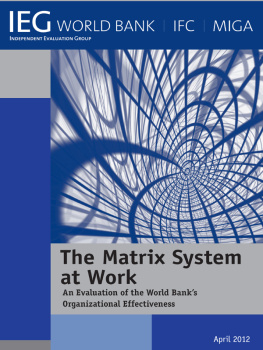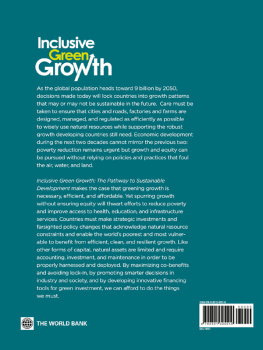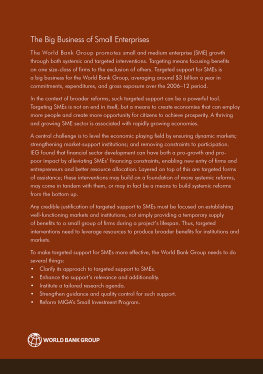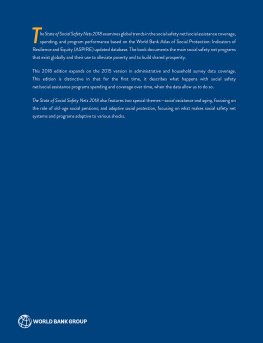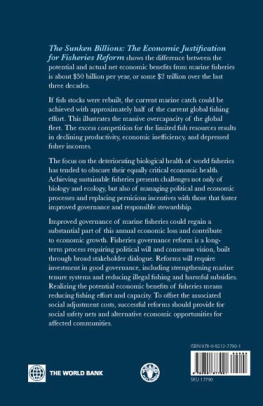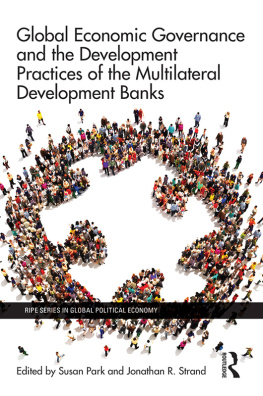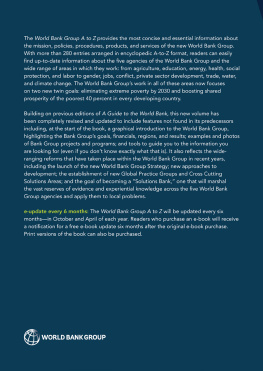World Bank - The Matrix System at Work: An Evaluation of the World Banks Organizational Effectiveness
Here you can read online World Bank - The Matrix System at Work: An Evaluation of the World Banks Organizational Effectiveness full text of the book (entire story) in english for free. Download pdf and epub, get meaning, cover and reviews about this ebook. year: 2012, publisher: World Bank Publications, genre: Business. Description of the work, (preface) as well as reviews are available. Best literature library LitArk.com created for fans of good reading and offers a wide selection of genres:
Romance novel
Science fiction
Adventure
Detective
Science
History
Home and family
Prose
Art
Politics
Computer
Non-fiction
Religion
Business
Children
Humor
Choose a favorite category and find really read worthwhile books. Enjoy immersion in the world of imagination, feel the emotions of the characters or learn something new for yourself, make an fascinating discovery.
- Book:The Matrix System at Work: An Evaluation of the World Banks Organizational Effectiveness
- Author:
- Publisher:World Bank Publications
- Genre:
- Year:2012
- Rating:4 / 5
- Favourites:Add to favourites
- Your mark:
The Matrix System at Work: An Evaluation of the World Banks Organizational Effectiveness: summary, description and annotation
We offer to read an annotation, description, summary or preface (depends on what the author of the book "The Matrix System at Work: An Evaluation of the World Banks Organizational Effectiveness" wrote himself). If you haven't found the necessary information about the book — write in the comments, we will try to find it.
The 1997 Bank reforms that introduced the matrix management concept aimed to adapt the organization to changing circumstances and address concerns among external stakeholders about the role of aid in development. The reforms were motivated largely by widespread recognition that the Banks development programs were excessively driven by a culture of lending, with insufficient attention to client needs and the quality of results, which are crucial to development effectiveness. A previous round of reforms in 1987 had strengthened the country focus, but quality remained a concern. Furthermore, access of developing countries to development finance from the private sector had increased significantly, leading to a decreasing share of official development aid, including Bank financing, in total flows to developing countries.
By the mid-1990s, pressure for change was acute. The 1997 reforms tried to address these challenges through a new set of organizational arrangements, increased decentralization, and matrix management. The most frequent rationale for a matrix structure is to balance competing priorities, combine capabilities for market advantage, share resources for efficiency, and retain flexibility to redeploy resources in the face of changing priorities and a diversified client base. The matrix system - a dual matrix, Bank-wide between the six Regions and four networks, and in each Region between Country Management Units and Sector Management Units - was to be facilitated by dual accountability for technical quality and an internal labor market for staff renewal and mobility. It has been more than a decade since the 1997 reorganization, and concerns that the matrix system is not delivering on its promise persist.
This evaluation assesses the extent to which the dual objectives of the matrix system - enhancing client responsiveness and establishing strong technical networks to deliver quality services - have been attained and have enhanced the Banks development effectiveness. The evaluation focuses on implementation of the current matrix system rather than on the 1997 matrix design and follows an objectives-based approach to assess the relevance and effectiveness of the matrix reform until 2010. To the extent feasible, the evaluation also examines the efficiency of matrix arrangements.
World Bank: author's other books
Who wrote The Matrix System at Work: An Evaluation of the World Banks Organizational Effectiveness? Find out the surname, the name of the author of the book and a list of all author's works by series.

